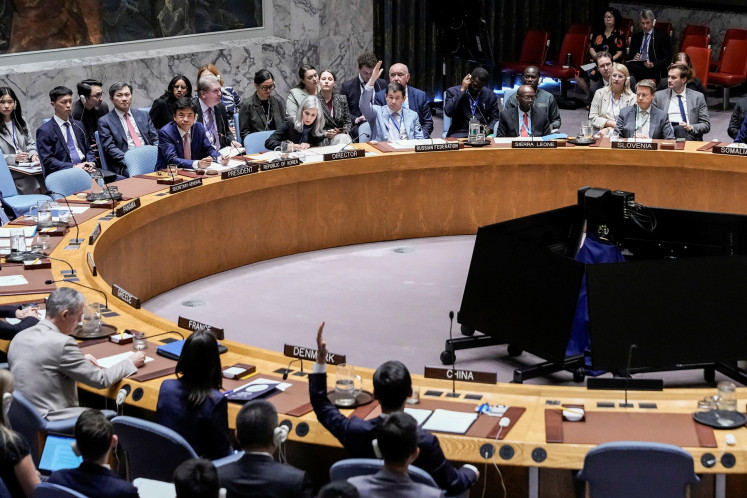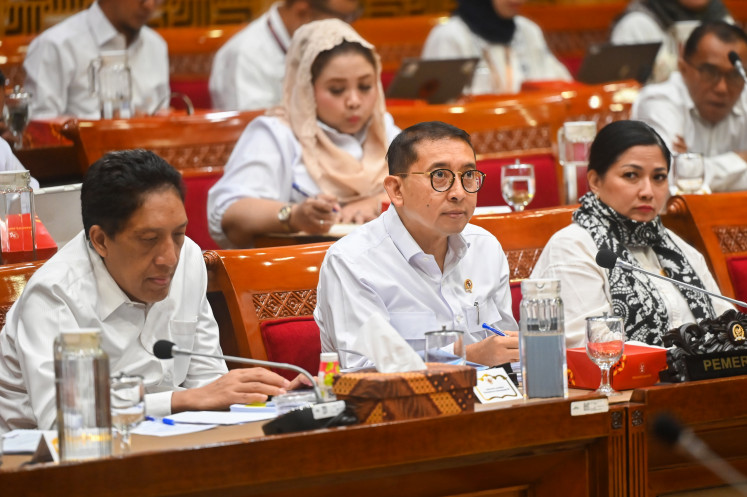Popular Reads
Top Results
Can't find what you're looking for?
View all search resultsPopular Reads
Top Results
Can't find what you're looking for?
View all search resultsLocal demand for cars to rise 275% by 2025
Domestic demand for automobiles will increase dramatically by 2025, driven by rising per capita incomes, robust economic growth and urbanization, a consulting group says
Change text size
Gift Premium Articles
to Anyone
D
omestic demand for automobiles will increase dramatically by 2025, driven by rising per capita incomes, robust economic growth and urbanization, a consulting group says.
The ratio of local car owners would jump significantly from 80 to 300 units per 1,000 people by 2025, an increase of 275 percent, boosted particularly by increased consumer purchasing power, Masaki Honda, the principal consultant for automotive and transportation at Frost & Sullivan Asia Pacific, said on Monday in Jakarta.
“Indonesia’s gross domestic product [GDP], which was US$700 billion in 2010, is expected to reach $4.6 trillion by 2025, making it the world’s 10th largest economy. By that time, the GDP per capita will be $17,000, up from around $3,000 at present,” Honda said during the 7th Indonesia International Automotive Conference at the Jakarta International Expo in Kemayoran.
Basic cars would be more affordable by 2025, pushing original equipment manufacturers to expand production capacity to meet higher demand, Honda said.
“Basic-feature cars will be still in high demand for new car owners. High-end vehicles will become more popular due to increasing affordability. Second and third car owners will select smaller cars that can satisfy personal transportation needs,” according to Honda’s
estimate.
According to the consultant, another trend that would influence car demand by 2025 was urbanization, which will create more megacities, or cities with populations of around 8 million; mega-regions, with populations of around 15 million; and mega-corridors, with more than 25 million inhabitants.
The firm said in a report that Indonesia will have two mega-
corridors, in Java and Sumatra; and four emerging corridors, such as Kalimantan and Sulawesi, by 2025.
Corridors refer to big cities that are connected by national roads such as the Jakarta–Bandung–Semarang–Surabaya corridor.
The development of megacorridors will result in expanded distribution channels to support rural people’s integration in urban areas.
“New fuel-efficient models and low-carbon emissions vehicles will be required, as the distance people travel will increase when urbanization proceeds from megacity to mega-region and mega-corridors,” Honda said.
The government is readying its low-carbon emissions vehicle project to cut ballooning fossil fuel consumption and preparing tax incentives to stimulate development of low-cost, eco-friendly, hybrid and electric cars.
Under the draft rule, the government plans to reduce the sales tax on luxury goods to as low as zero percent to cut alternative car prices.
Car sales, a key indicator of consumption in Southeast Asia’s largest economy, have reached new records in the past years, totalling 894,164 units, in 2011, up 19.93 percent from 2010.
In the January-to-August period of 2012, sales have topped 714,152 units.










